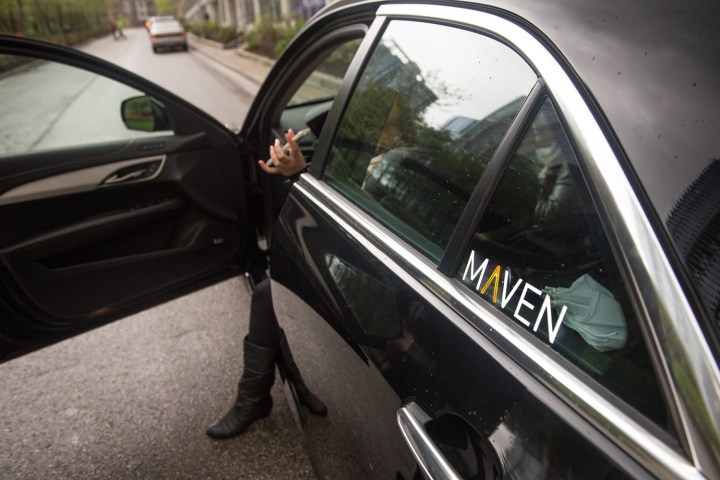
General Motors is expanding its Maven “personal mobility brand” to new turf after going international. Maven first began overseeing car-sharing services in New York City and Ann Arbor, Michigan, and shortly thereafter, expanded into Boston, Chicago, and Washington, D.C. Maven is now on an expansion streak once again — just a few weeks after the service made its way to Canada, it’s now going south to Austin.
Maven’s move into its latest new market comes just in time for SXSW. There will be a total of 20 Chevrolet Bolt EVs made available as part of the launch, and Texans will be able to use these cars for ridesharing or for delivering packages or running errands.
The pricing scheme is structured on a weekly basis, starting at $229 per week plus taxes. But because the entire Maven Austin fleet will be electric, the company is also providing free charging for its customers for a “limited time” (no word yet on when that time ends).
Things are a little bit different for Maven’s other new city, Toronto, in which cars-on-demand start at $9 an hour. While Maven previously conducted a pilot in nearby Waterloo, Toronto represents the company’s first at-scale launch outside the U.S. since it first went live nearly two years ago.
As Maven and GM Urban Mobility Vice President Julia Steyn explained, Toronto made sense for the company’s first non-U.S. endeavor. “We’re among a lot of like-minded companies here, there’s a huge tech boom in the city,” Steyn said. “And frankly, for better or for worse, Toronto’s issues with congestion and people not wanting to own vehicles is not unique to many other large cities. We always wanted to have a large-scale deployment and Toronto will afford us that.”
Another major city for Maven is Chicago, where services begin at $8 an hour including insurance and fuel. There are around 30 vehicles at 15 sites throughout the city, including Buick, Cadillac, and Chevrolet models. Consumers can reserve cars through an app, and even have them delivered.
While Maven City is available to the general public, residents of the Aqua luxury high-rise apartment in Chicago’s Lakeshore East neighborhood also have access to Maven+. It’s another version of Maven’s car-sharing service geared toward residents of these types of apartment complexes. GM’s first car-sharing experiment involved a luxury apartment building in New York City; the company believes they make a particularly good market for car-sharing services.
Chicago has historically been one of the first cities to see the fruits of GM’s partnership with Lyft. Last March, GM launched the Chicago Express Drive short-term rental program for Lyft drivers. This allows those drivers to rent a Chevy Equinox for $99 a week. The program now includes hundreds of cars across the U.S., as it expanded to Boston, Baltimore, Washington, D.C., and other markets throughout 2017.
Update: Maven has now expanded to Austin, TX with an all-electric fleet.
Editors' Recommendations
- 2024 Chevrolet Equinox EV: price, release date, range, and more
- Bold style alone can’t muscle Chevy’s new Blazer EV to the head of its class
- With EV Live, GM lets you chat up EV experts away from obnoxious dealers
- GMC poured all of its truck-making expertise into the Sierra EV pickup
- A weird thing just happened with a fleet of autonomous cars


